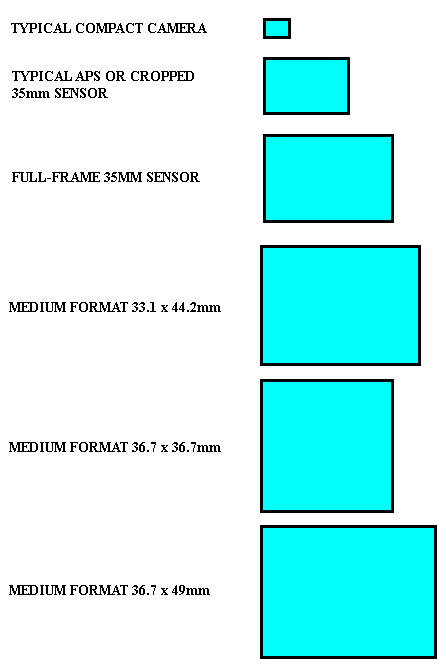 Public perception tends to be that more megapixels are always good because they increase the quality of the images recorded by a digital camera. Consequently camera manufacturers tend to use the megapixel count as a headline figure. However, the situation is not quite that simple.
Public perception tends to be that more megapixels are always good because they increase the quality of the images recorded by a digital camera. Consequently camera manufacturers tend to use the megapixel count as a headline figure. However, the situation is not quite that simple.
Sensor size is also a major factor, and has a major impact upon the production of noise in digital images.The physical dimensions of the sensors in digital cameras vary enormously. Since the sensor is a relatively expensive element of a camera, cheaper cameras tend to have the smallest sensors. However, customers typically regard the number of megapixels as a measure of a camera's quality, so manufacturers squeeze the maximum possible number of individual photocells onto each sensor. What is often overlooked is that the size, and hence quality, of individual photocells may be more important than the total number of cells available. A lower number of larger photocells might produce a more useful image than a larger number of very small photocells. The design of a digital camera therefore involves all sorts of compromises and trade-offs.
Digital cameras featuring the same number of megapixels can produce very different image quality. The basic reason for this is that a large sensor has a much bigger physical area, so each individual pixel can also be much larger. Although a manufacturer may just use increased sensor area to pack in more megapixels, there comes a point where this may be counter-productive. Fewer, larger-area pixels might produce a better result.
A principal limitation of a small sensor with a high megapixel count is that it is unlikely to be useable at high ISO settings. The number of photons collected by each tiny photocell will not be sufficient to produce an output with a practicable signal-to-noise ratio. In broad terms, the situation is similar to that of a distant television transmitter which provides only a weak and hence noisy television picture when received by a small antenna. The signal received is not much stronger than other interference with which it is mixed, and the receiver struggles to separate the picture information from the noise. The signal-to-noise ratio of a sensor cell output tends to worsen as the photocells get smaller, ISO settings get higher, and as its temperature of the sensor rises. Long exposures, greater that a few seconds duration, may also produce an unacceptable accumulation of noise in an image. Manufacturers have tried numerous noise-reduction techniques to compensate for the noise produced by sensors, particularly under low light conditions, but all noise reduction destroys fine image detail to some extent. Noise reduction techniques may well be beneficial but they can only be used to a certain extent before an image begins to suffer significant degradation.
Larger pixels are able to collect more photons and hence have a better signal-to-noise ratio than smaller sensor elements under the same lighting conditions and exposure settings. Larger pixels also tend to have a larger dynamic range than smaller pixels. Dynamic range is basically a measure of the number of tones discernable between pure white and background noise (the equivalent of black). Larger pixels have a larger photon storage capacity and so generally feature greater dynamic range.
The so-called full-frame sensor which has the dimensions of a 35mm film frame (36mm x 24mm) is an expensive but very satisfactory solution for most purposes. Not only can it easily accommodate 10 million reasonably large photocells, or more, but it also maintains the standard 35mm image format and hence focal lengths to which so many photographers are accustomed. Most of those old 35mm-format lenses can consequently be dusted off and used in the same way as they were on traditional film cameras.
The best digital image quality is obtained from the large sensors found in modern medium-format cameras such as Hasselblads and Mamiyas. These currently use sensors having dimensions of 33.1mm x 44.2mm, 36.7mm x 36.7mm, and 36.7mm x 49mm as seen in the diagram.






